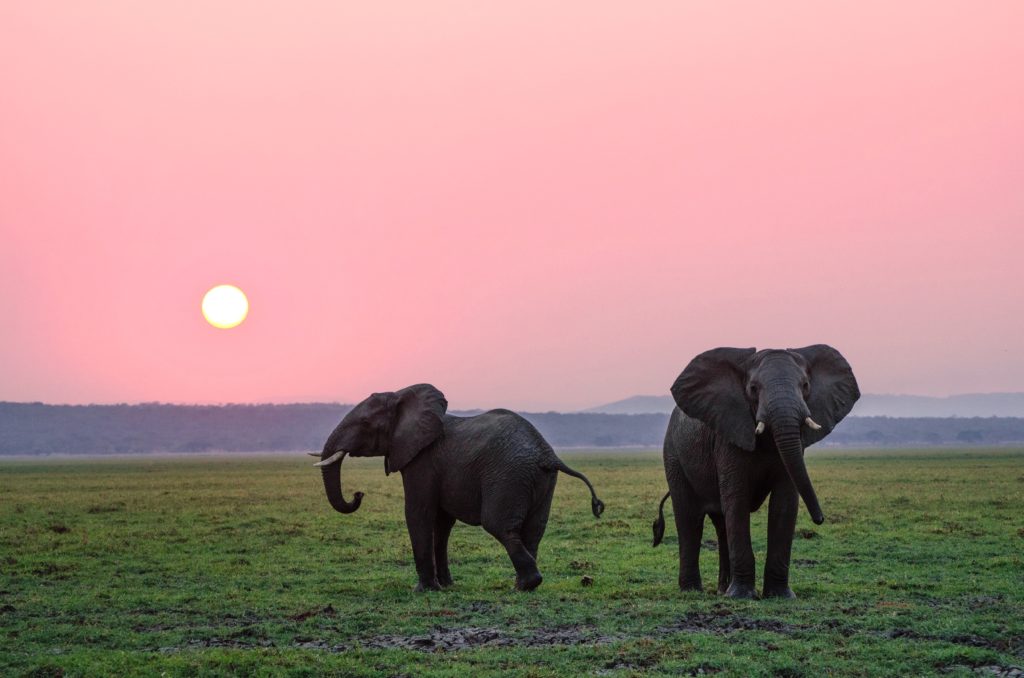I remember the first time I saw an elephant. The city in Poland where I lived had a zoo closing down as a bigger, newer zoo got built. But the last animals to get transferred were the elephants. For a few weeks, only a family of three sister elephants lived there and one of their babies. I was five years old, and I stood in front of the enclosure; the only thing between four giants whose feet were larger than my family’s entire living room and me was a small wired fence. They swayed gently on all four legs the size of trees, their trunk dragging through the mud or caressing their sister’s head. The baby ran underneath them and then rolled across the ground. Ten years since the day I saw elephants for the first time, the population of forest elephants has dropped by 62 percent.
Conservation is extremely challenging and requires a lot of resources; luckily, over the years, “eco-tourism,” which are tourist attractions that focus on showcasing natural environments and the animals that inhabit them, funneled money and resources to the organizations that work tirelessly to protect these populations. However, since the pandemic started and people haven’t been able to travel, whether due to border closures or wanting to prevent the spread of the virus, the conservation organizations and wild animals have lost access to one of their primary sources of funding. This means that the groups can’t afford to maintain as much of the ecosystems, and it also means that they can’t afford as many rangers on staff, which has led to a sharp increase in poaching.
 “If the supply of money from tourism dries up, rangers might be laid off, leave the bush and look for other ways to feed their families,” said Chris Thouless, director of research for Save the Elephants. “If someone sees an elephant, for instance, they might shoot it as an investment even if they cannot immediately get money for the tusks, and hunting for bush meat may increase.” With fewer rangers patrolling and no risk of running into a tour, poachers have been able to get away with a lot more. In Kafue National Park, rangers reported a 170% increase in finding snare traps in 2020 compared to the year prior when the pandemic had not yet started. In South Africa, Rhino 911, an emergency rhino rescue, has been getting calls for help nearly every day since the pandemic has begun.
“If the supply of money from tourism dries up, rangers might be laid off, leave the bush and look for other ways to feed their families,” said Chris Thouless, director of research for Save the Elephants. “If someone sees an elephant, for instance, they might shoot it as an investment even if they cannot immediately get money for the tusks, and hunting for bush meat may increase.” With fewer rangers patrolling and no risk of running into a tour, poachers have been able to get away with a lot more. In Kafue National Park, rangers reported a 170% increase in finding snare traps in 2020 compared to the year prior when the pandemic had not yet started. In South Africa, Rhino 911, an emergency rhino rescue, has been getting calls for help nearly every day since the pandemic has begun.
The pandemic will place already endangered animals at risk of extinction if a new way of supporting these conservationist organizations is not soon established. Several non-profits are already working towards creating this new system. The Lion’s Share, a UN trust fund, gives grants to communities that depend on ecotourism. These grants help protect the people and their jobs so that they don’t have to worry about job security and can instead focus on the wonderful work they do to preserve the local environment.
Other programs protecting these endangered animals and their ecosystems are tax incentives, green and blue bonds that help raise capital with an ecological focus, biodiversity offsets which encourage developers and planning authorities to offset their impact on biodiversity by financing conservation efforts elsewhere, and debt-for-nature swaps, which forgive a nation’s debt when they promise a certain amount of local investments in nature conservation. Most of these incentives are government and corporation-focused, which makes the financial support more consistent rather than depending on the seasonal cycles of ecotourism. Hopefully, the unpredictable nature of this pandemic results in a deeper understanding of the importance of conservationism and how to best support it so all of us, big and small, furry, feathery, and scaly, can enjoy calling this beautiful planet our home.
Get more like this—Sign up for our daily inspirational newsletter for exclusive content!
____
Photo by Mylon Ollila on Unsplash
